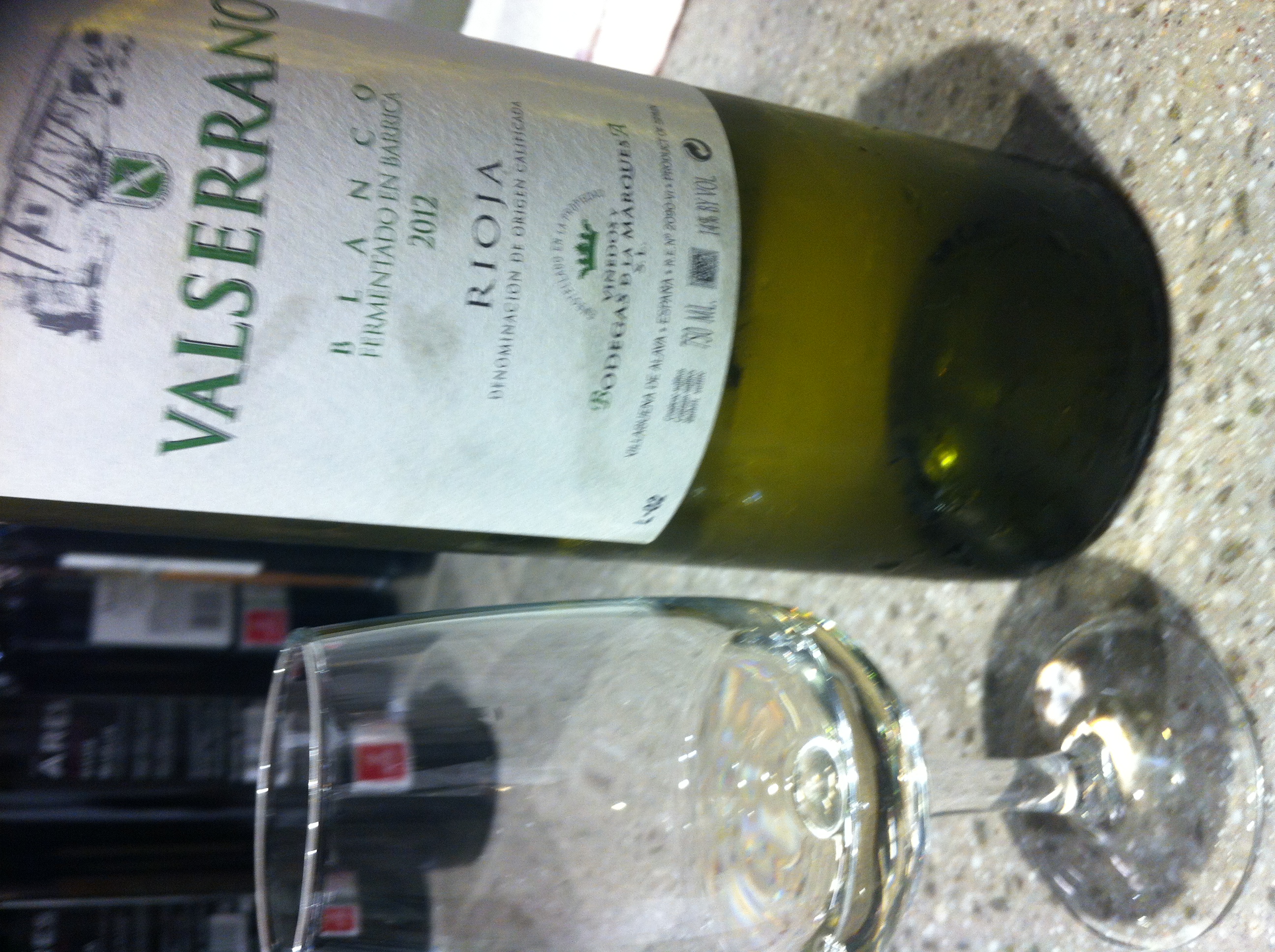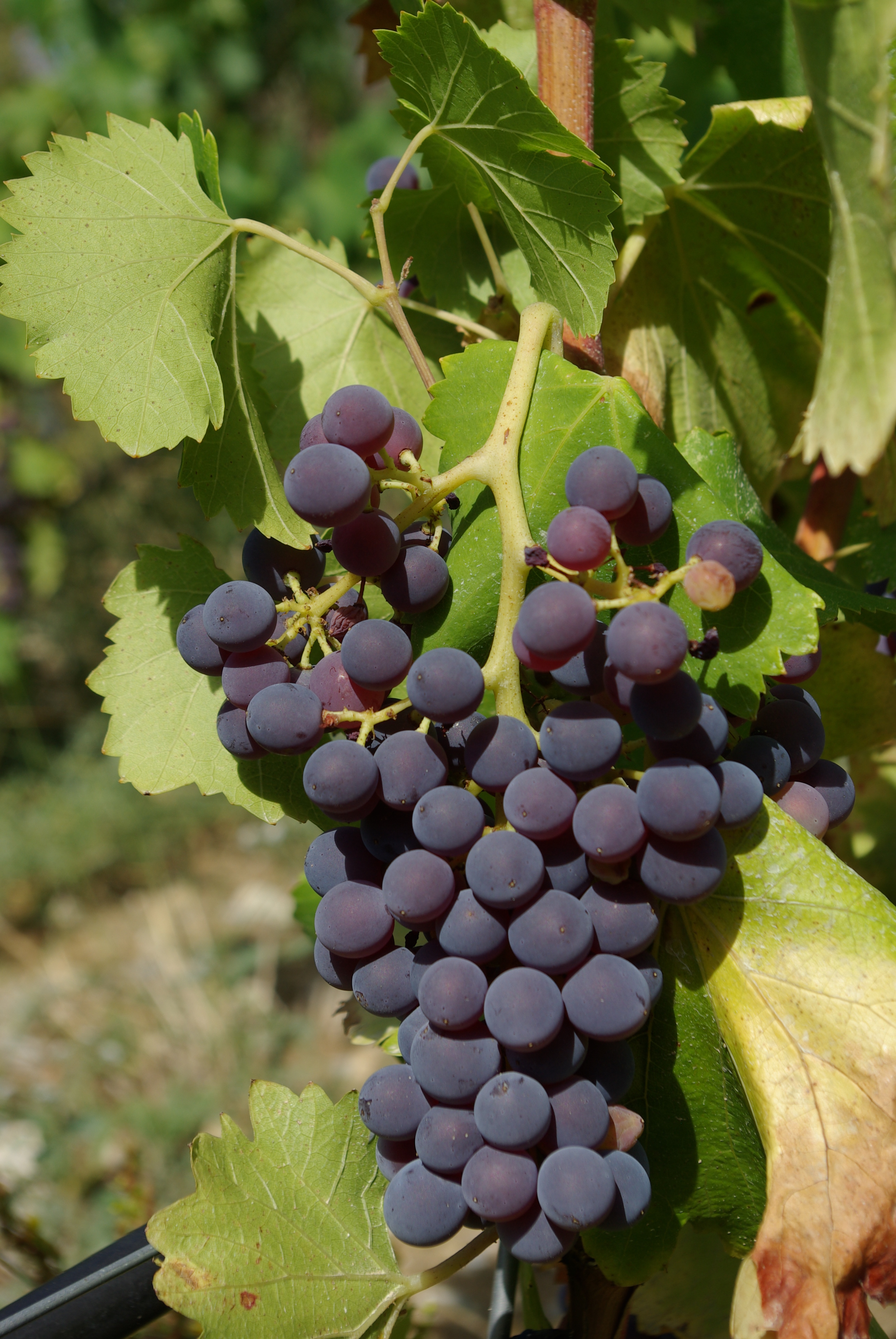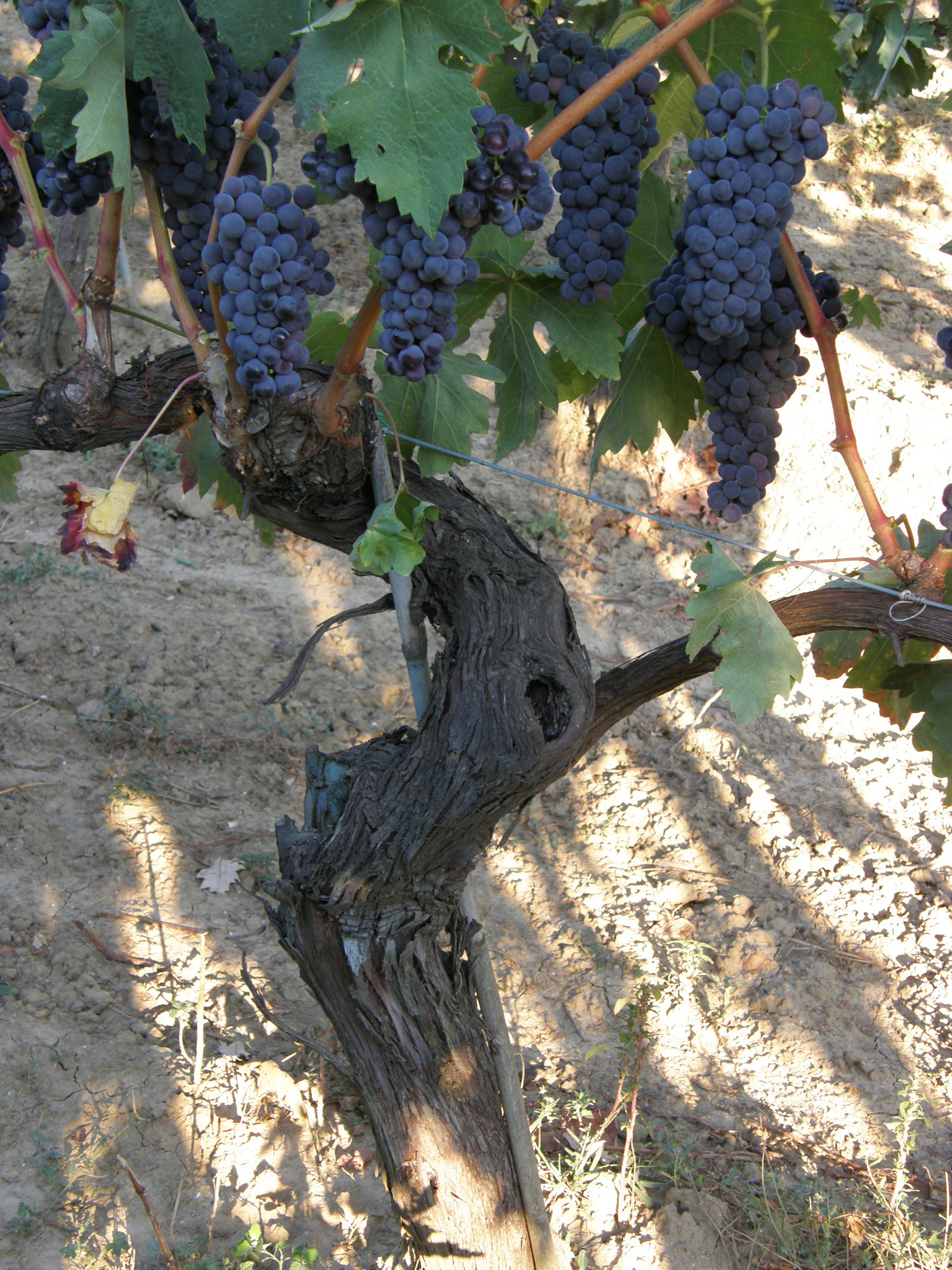|
Arlanza (DO)
Arlanza is a Spanish Denominación de Origen Protegida (DOP) located in the provinces of Burgos and Palencia, Castile and León, Spain. It was officially upgraded from the lower status of QWPSR (''VCPRD'' in Spanish) in 2007. The DOP covers 67 municipalities (54 in the province of Burgos and 13 in the province of Palencia). There are 23 wineries (''bodegas'') from Burgos registered and 2 from Palencia. The DOP takes its name from the river Arlanza which flows through it. History The first written evidence of wine production in this area comes from the 12th century, when the monastery of Santa María de Bujedo de Juarros ( es) purchased vineyards on the banks of the rivers Arlanza and Duero. When the phylloxera virus devastated the vineyards of Europe at the end of the 19th century, almost all the vineyards in this area were uprooted and replanted by grafting onto American rootstock. By the 1920s the replanting had been completed. Climate The climate is Continental, with l ... [...More Info...] [...Related Items...] OR: [Wikipedia] [Google] [Baidu] |
Province Of Burgos
The Province of Burgos is a province of northern Spain, in the northeastern part of the autonomous community of Castile and León. It is bordered by the provinces of Palencia, Cantabria, Vizcaya, Álava, La Rioja, Soria, Segovia, and Valladolid. Its capital is the city of Burgos. The Cartularies of Valpuesta from the monastery Santa María de Valpuesta, in Burgos, are considered to be the oldest known documents containing words written in the Spanish language. Overview Since 1964, archaeologists have been working at numerous areas of the Archaeological Site of Atapuerca, where they have found ancient hominid and human remains, the former dating to more than one million years ago, with artefacts from the Palaeolithic and Bronze Ages of man. The site has been designated a UNESCO World Heritage Site. The province has an area of and a population of approximately 375,000 of whom nearly half live in the capital. The other locations higher than 20,000 inhabitants apart from Bur ... [...More Info...] [...Related Items...] OR: [Wikipedia] [Google] [Baidu] |
Phylloxera
Grape phylloxera is an insect pest of commercial grapevines worldwide, originally native to eastern North America. Grape phylloxera (''Daktulosphaira vitifoliae'' (Fitch 1855) belong to the family Phylloxeridae, within the order Hemiptera, bugs); originally described in France as ''Phylloxera vastatrix''; equated to the previously described ''Daktulosphaera vitifoliae'', ''Phylloxera vitifoliae''. The insect is commonly just called phylloxera (; from grc, φύλλον, leaf, and , dry). These almost microscopic, pale yellow sap-sucking insects, related to aphids, feed on the roots and leaves of grapevines (depending on the phylloxera genetic strain). On ''Vitis vinifera'', the resulting deformations on roots ("nodosities" and "tuberosities") and secondary fungal infections can girdle roots, gradually cutting off the flow of nutrients and water to the vine.Wine & Spirits Education Trust ''"Wine and Spirits: Understanding Wine Quality"'' pgs 2-5, Second Revised Edition (2012) ... [...More Info...] [...Related Items...] OR: [Wikipedia] [Google] [Baidu] |
Petit Verdot
Petit Verdot is a variety of red wine grape, principally used in classic Bordeaux blends. It ripens much later than the other varieties in Bordeaux, often too late, so it fell out of favour in its home region. When it does ripen it adds tannin, colour and flavour, in small amounts, to the blend. Petit verdot has attracted attention among winemakers in the New World, where it ripens more reliably and has been made into single varietal wine. It is also useful in 'stiffening' the mid palate of Cabernet Sauvignon blends. When young its aromas have been likened to banana and pencil shavings. Strong tones of violet and leather develop as it matures. History Petit Verdot probably predates Cabernet Sauvignon in Bordeaux, but its origins are unclear. There are records of it in the eighteenth century, but its characteristics suggest an origin in much hotter climes than the Gironde. It is one parent of Tressot, the other parent being Duras, a grape from the upper Tarn valley near To ... [...More Info...] [...Related Items...] OR: [Wikipedia] [Google] [Baidu] |
Merlot
Merlot is a dark blue–colored wine grape variety, that is used as both a blending grape and for varietal wines. The name ''Merlot'' is thought to be a diminutive of ''merle'', the French name for the blackbird, probably a reference to the color of the grape. Its softness and "fleshiness," combined with its earlier ripening, make Merlot a popular grape for blending with the sterner, later-ripening Cabernet Sauvignon, which tends to be higher in tannin. Along with Cabernet Sauvignon, Cabernet Franc, Malbec and Petit Verdot, Merlot is one of the primary grapes used in Bordeaux wine, and it is the most widely planted grape in the Bordeaux wine regions. Merlot is also one of the most popular red wine varietals in many markets. This flexibility has helped to make it one of the world's most planted grape varieties. As of 2004, Merlot was estimated to be the third most grown variety at globally.J. Robinson (ed) ''The Oxford Companion to Wine'' Third Edition, Oxford Universi ... [...More Info...] [...Related Items...] OR: [Wikipedia] [Google] [Baidu] |
Cabernet Sauvignon
Cabernet Sauvignon () is one of the world's most widely recognized red wine grape varieties. It is grown in nearly every major wine producing country among a diverse spectrum of climates from Australia and British Columbia, Canada to Lebanon's Beqaa Valley. Cabernet Sauvignon became internationally recognized through its prominence in Bordeaux wines, where it is often blended with Merlot and Cabernet Franc. From France and Spain, the grape spread across Europe and to the New World where it found new homes in places like California's Santa Cruz Mountains, Paso Robles, Napa Valley, New Zealand's Hawke's Bay, South Africa's Stellenbosch region, Australia's Margaret River, McLaren Vale and Coonawarra regions, and Chile's Maipo Valley and Colchagua. For most of the 20th century, it was the world's most widely planted premium red wine grape until it was surpassed by Merlot in the 1990s. However, by 2015, Cabernet Sauvignon had once again become the most widely planted ... [...More Info...] [...Related Items...] OR: [Wikipedia] [Google] [Baidu] |
Mencía (grape)
Mencía, known as Jaen in Portugal, is a grape variety native to the western part of the Iberian Peninsula. In Spain, it is planted on over , with another in neighboring Portugal. It is primarily found in the Bierzo, Ribeira Sacra, Valdeorras, Monterrei and Dão wine regions. Most wines produced from Mencía have traditionally been light, pale, relatively fragrant red wines for early consumption. This style of wine was the result of post-Phylloxera plantations on fertile plains, which tended to give high yields but diluted wine. In recent years, much more concentrated and complex wines have been produced by a new generation of winemakers, primarily from old vines growing on hillsides, often on schist soils, in combination with careful vineyard management. This has led to a renewed interest in Mencía and the denominaciones de origens using it, such as Bierzo, Valdeorras, Ribeira Sacra, Monterrei and the little-known Liébana. Since the 1990s, the grape is increasing in ... [...More Info...] [...Related Items...] OR: [Wikipedia] [Google] [Baidu] |
Grenache
Grenache () or Garnacha () is one of the most widely planted red wine grape varieties in the world.Niels Lillelund: ''Rhône-Vinene'' p. 25, JP Bøger – JP/Politikens Forlagshus A/S, 2004. . It ripens late, so it needs hot, dry conditions such as those found in Spain, where the grape most likely originated. It is also grown in the Italian island of Sardinia, the south of France, Australia, and California's Monterey AVA and San Joaquin Valley. It is generally spicy, berry-flavored and soft on the palate and produces wine with a relatively high alcohol content, but it needs careful control of yields for best results. Characteristic flavor profiles on Grenache include red fruit flavors (raspberry and strawberry) with a subtle, white pepper spice note. Grenache wines are highly prone to oxidation, with even young examples having the potential to show browning (or "bricking") coloration that can be noticed around the rim when evaluating the wine at an angle in the glass. A ... [...More Info...] [...Related Items...] OR: [Wikipedia] [Google] [Baidu] |
Tempranillo
Tempranillo (also known as Ull de Llebre, Cencibel, Tinto Fino and Tinta del Pais in Spain, Aragonez or Tinta Roriz in Portugal, and several other synonyms elsewhere) is a black grape variety widely grown to make full-bodied red wines in its native Spain. Its name is the diminutive of the Spanish ''temprano'' ("early"), a reference to the fact that it ripens several weeks earlier than most Spanish red grapes. Tempranillo has been grown on the Iberian Peninsula since the time of Phoenician settlements. It is the main grape used in Rioja, and is often referred to as Spain's noble grape. The grape has been planted throughout the globe's wine regions. In 2015, Tempranillo was the fourth most widely planted wine grape variety worldwide with under vine, of which 87% was in Spain where it is the most planted red grape variety. Unlike more aromatic red wine varieties like Cabernet Sauvignon, Sangiovese and Pinot noir, Tempranillo has a relatively neutral profile so it is often ... [...More Info...] [...Related Items...] OR: [Wikipedia] [Google] [Baidu] |
Viura
Macabeo, also called Viura or Macabeu (, ), is a white variety of wine grape. It is widely grown in the Rioja region of northeastern Spain, the Cava producing areas south of Barcelona, and the Languedoc-Roussillon region of France. Spanish plantations stood at nearly in 2015, making it the second most grown white grape variety in Spain. In France, plantations accounted for in 2007. Since 2009, some Macabeo is grown in Israel. Styles and winemaking  The grape is mostly used to make mildly acidic and young white wines mostly suitable for ea ...
The grape is mostly used to make mildly acidic and young white wines mostly suitable for ea ...
[...More Info...] [...Related Items...] OR: [Wikipedia] [Google] [Baidu] |
Albillo
Albillo or Albillo Real is a white Spanish wine grape varietyAlbillo Real , , accessed on June 26, 2010 planted primarily in the region, and also in , and |
Rootstock
A rootstock is part of a plant, often an underground part, from which new above-ground growth can be produced. It could also be described as a stem with a well developed root system, to which a bud from another plant is grafted. It can refer to a rhizome or underground stem. In grafting, it refers to a plant, sometimes just a stump, which already has an established, healthy root system, onto which a cutting or a bud from another plant is grafted. In some cases, such as vines of grapes and other berries, cuttings may be used for rootstocks, the roots being established in nursery conditions before planting them out. The plant part grafted onto the rootstock is usually called the scion. The scion is the plant that has the properties that propagator desires above ground, including the photosynthetic activity and the fruit or decorative properties. The rootstock is selected for its interaction with the soil, providing the roots and the stem to support the new plant, obtaining the neces ... [...More Info...] [...Related Items...] OR: [Wikipedia] [Google] [Baidu] |
Duero
The Douro (, , ; es, Duero ; la, Durius) is the highest-flow river of the Iberian Peninsula. It rises near Duruelo de la Sierra in Soria Province, central Spain, meanders south briefly then flows generally west through the north-west part of central Spain and into northern Portugal, to its mouth at Porto, the second largest city of Portugal. At its mouth it meets the Atlantic Ocean. The scenic Douro railway line runs close to the river. Adjacent areas produce port (a mildly fortified wine) and other agricultural produce. A small tributary of the river has the Côa Valley Paleolithic Art site which is considered important to the archaeological pre-historic patrimony, designated a UNESCO World Heritage Site. Within Spain, it flows through the middle of the autonomous community of Castile and León, with the basin spanning through the northern half of the Meseta Central. The latter includes wine producing areas such as the Ribera del Duero DOP. History The Latin name ''Du ... [...More Info...] [...Related Items...] OR: [Wikipedia] [Google] [Baidu] |





